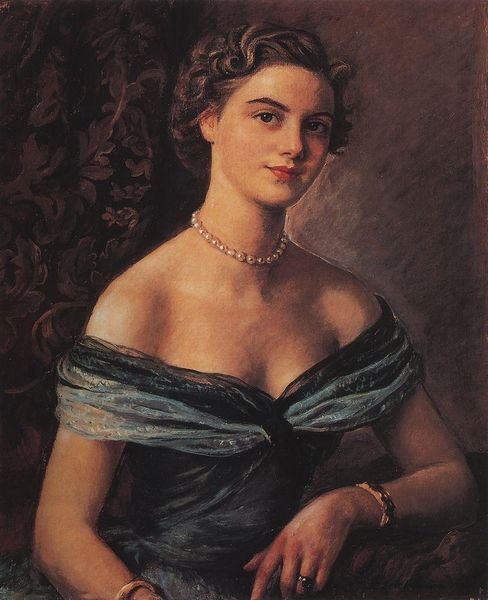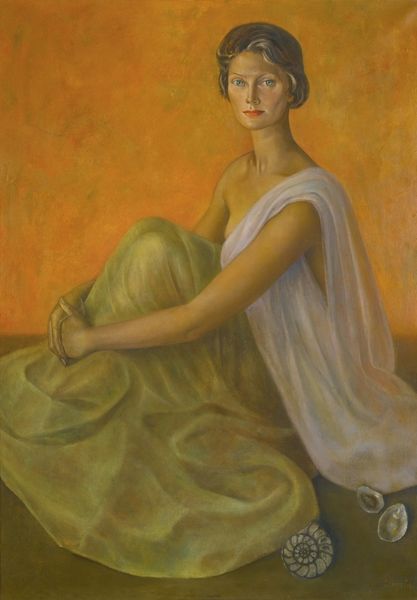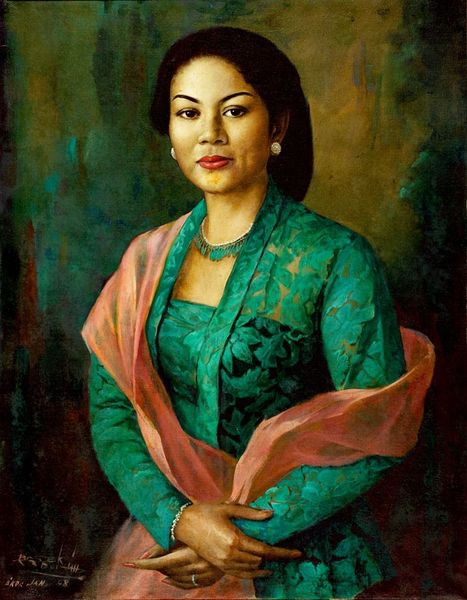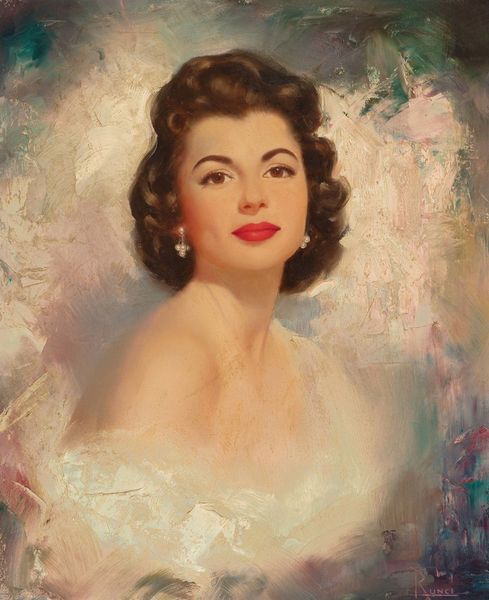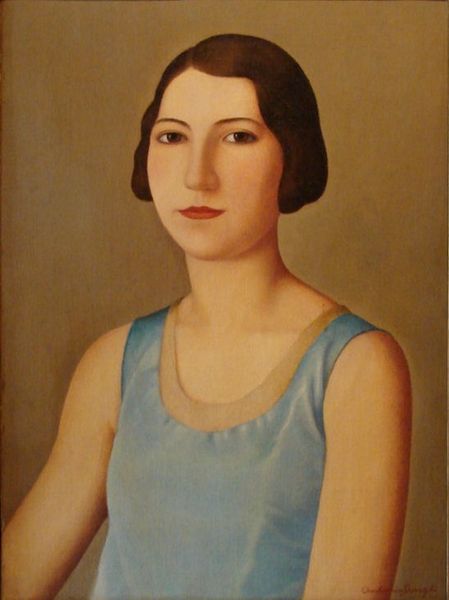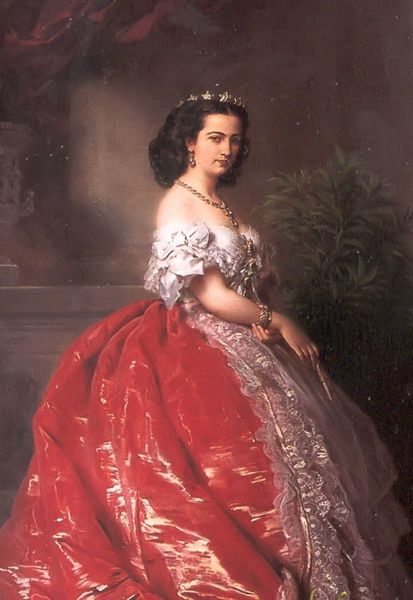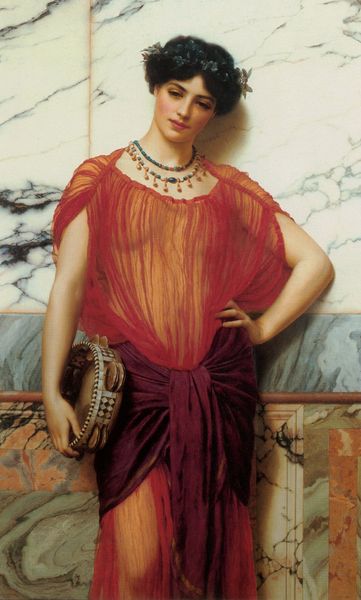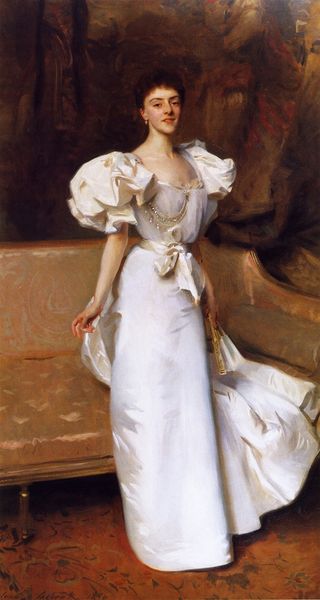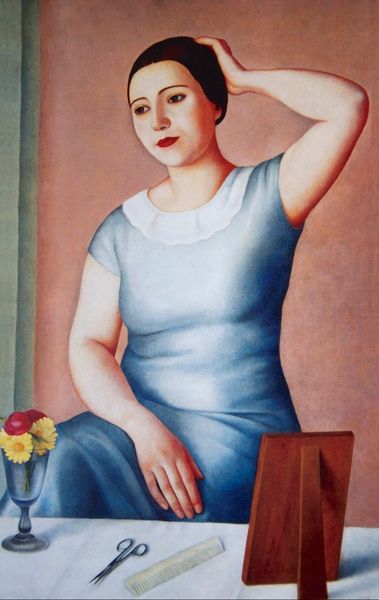
painting, oil-paint
#
portrait
#
painting
#
oil-paint
#
academic-art
#
realism
Copyright: Claudio Bravo,Fair Use
Curator: This is Claudio Bravo’s "Portrait of Maria Luisa Velasco" from 1965. It’s a rather striking piece. Editor: Striking is one word. I immediately notice the sheer amount of material in that dress – it looks almost sculptural. It contrasts dramatically with the smooth surface of whatever stone she's leaning on. What can you tell me about this artwork? Curator: Well, Bravo was a Chilean artist, deeply influenced by the Old Masters, but also operating in a moment of intense artistic and political ferment in Latin America. While many artists engaged directly with socio-political themes, Bravo focused on a highly refined, almost hyperrealistic technique. Editor: And you see that here in the rendering of the fabric – it is a masterful exercise in oil paint, isn’t it? All that texture, suggesting an unbelievable drape... I wonder about the process – how long would it take, layer upon layer, to create this effect? What type of canvas was he using, the exact pigments mixed... those questions become key to the artwork itself. Curator: Indeed. And note how the classical background portrait setting almost serves to heighten the modernism in the sitter’s hairstyle and the stark modernity of that dress, a certain tension plays across. She seems posed almost in the way a royal subject once would. The marble she rests against, the cool colour scheme, and her dark hair all work towards a kind of regal look. It creates a complex reading – a kind of homage with a clear nod to changing gendered presentation. Editor: True, the material certainly plays its part in crafting a certain narrative around status and luxury, which, I think, might not resonate easily with the working class considering the period it was made. Curator: Well, the reception was undoubtedly diverse. Bravo, despite his technical virtuosity, often faced critiques for seemingly detaching himself from the explicit social issues that dominated the Latin American art scene. Editor: Yet it’s precisely this intense focus on technique and the labor evident in the painting process that grabs my attention. It is also in her strong gaze directed out at us, one could even say that her direct expression claims a form of agency regardless of other art world politics and pressures that are in the undercurrent of the making. Curator: It makes me reconsider Bravo’s position within the art discourse of the period – and it challenges any too-easy reading of academic style as separate from the social or political sphere. Thank you. Editor: The devil is always in the details – the how of it all! And there’s plenty of room for everyone at the table.
Comments
No comments
Be the first to comment and join the conversation on the ultimate creative platform.
